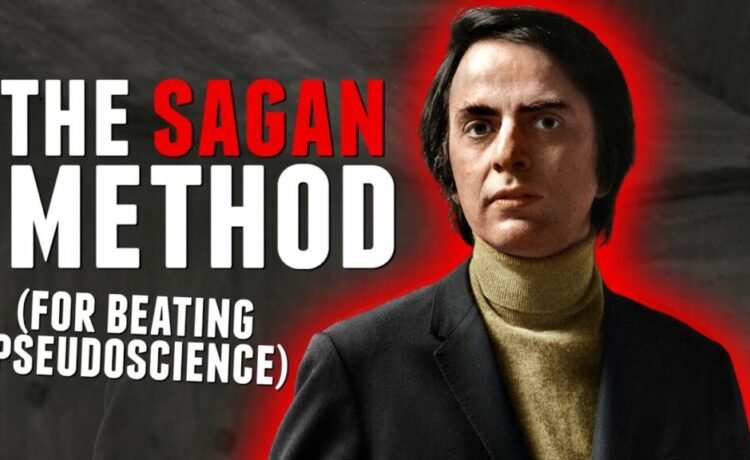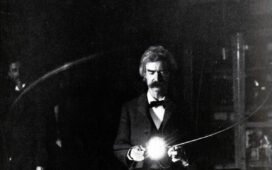Though he died too young, Carl Sagan left behind an impressively large body of work, including more than 600 scientific papers and more than 20 books. Of those books, none is more widely known to the public — or, still, more widely read by the public — than Cosmos, accompanied as it was by Cosmos: A Personal Voyage, a companion television series on PBS. Sagan’s other popular books, like Shadows of Forgotten Ancestors or Contact (the basis of the 1997 Hollywood movie) are also well worth reading, but we perhaps ignore at our greatest peril The Demon-Haunted World: Science as a Candle in the Dark. Published in 1995, the year before Sagan’s death, it stands as his testament to the importance of critical, scientific thinking for all of us.
The Demon-Haunted World is the subject of the Genetically Modified Skeptic video above, whose host Drew McCoy describes it as his favorite book. He pays special attention to its chapter in which Sagan lays out what he calls his “baloney detection kit.” This assembled metaphorical box of tools for diagnosing fraudulent arguments and constructing reasoned ones involves these nine principles:
- Wherever possible there must be independent confirmation of the “facts.”
- Encourage substantive debate on the evidence by knowledgeable proponents of all points of view.
- Arguments from authority carry little weight — “authorities” have made mistakes in the past. They will do so again in the future. Perhaps a better way to say it is that in science there are no authorities; at most, there are experts.
- Spin more than one hypothesis. If there’s something to be explained, think of all the different ways in which it could be explained. Then think of tests by which you might systematically disprove each of the alternatives.
- Try not to get overly attached to a hypothesis just because it’s yours. It’s only a way station in the pursuit of knowledge. Ask yourself why you like the idea. Compare it fairly with the alternatives.
- See if you can find reasons for rejecting it. If you don’t, others will.
- If whatever it is you’re explaining has some measure, some numerical quantity attached to it, you’ll be much better able to discriminate among competing hypotheses. What is vague and qualitative is open to many explanations.
- If there’s a chain of argument, every link in the chain must work (including the premise) — not just most of them.
- Occam’s Razor. This convenient rule-of-thumb urges us when faced with two hypotheses that explain the data equally well to choose the simpler. Always ask whether the hypothesis can be, at least in principle, falsified…. You must be able to check assertions out. Inveterate skeptics must be given the chance to follow your reasoning, to duplicate your experiments and see if they get the same result.
As McCoy points out, these techniques of mind have to do with canceling out the manifold biases present in our thinking, those natural human tendencies that incline us to accept ideas that may or may not coincide with reality as it is. If we take no trouble to correct for these biases, Sagan came to believe, we’ll become easy marks for all the tricksters and charlatans who happen to come our way. And that’s just on the micro level: on the macro level, vulnerability to delusion can bring down entire civilizations.
“Like all tools, the baloney detection kit can be misused, applied out of context, or even employed as a rote alternative to thinking,” Sagan cautions. “But applied judiciously, it can make all the difference in the world — not least in evaluating our own arguments before we present them to others.” McCoy urges us to heed these words, adding that “this kit is not some perfect solution to the world’s problems, but as it’s been utilized over the last few centuries” — for its basic precepts long predate Sagan’s particular articulation — “it has enabled us to create technological innovations and useful explanatory models of our world more quickly and effectively than ever before.” The walls of baloney may always be closing in on humanity, but if you follow Sagan’s advice, you can at least give yourself some breathing room.
Related content:
Carl Sagan on the Importance of Choosing Wisely What You Read (Even If You Read a Book a Week)
Carl Sagan’s Syllabus & Final Exam for His Course on Critical Thinking (Cornell, 1986)
Richard Feynman Creates a Simple Method for Telling Science From Pseudoscience (1966)
How to Spot Bullshit: A Manual by Princeton Philosopher Harry Frankfurt (RIP)
Critical Thinking: A Free Course
Based in Seoul, Colin Marshall writes and broadcasts on cities, language, and culture. His projects include the Substack newsletter Books on Cities and the book The Stateless City: a Walk through 21st-Century Los Angeles. Follow him on the social network formerly known as Twitter at @colinmarshall.















